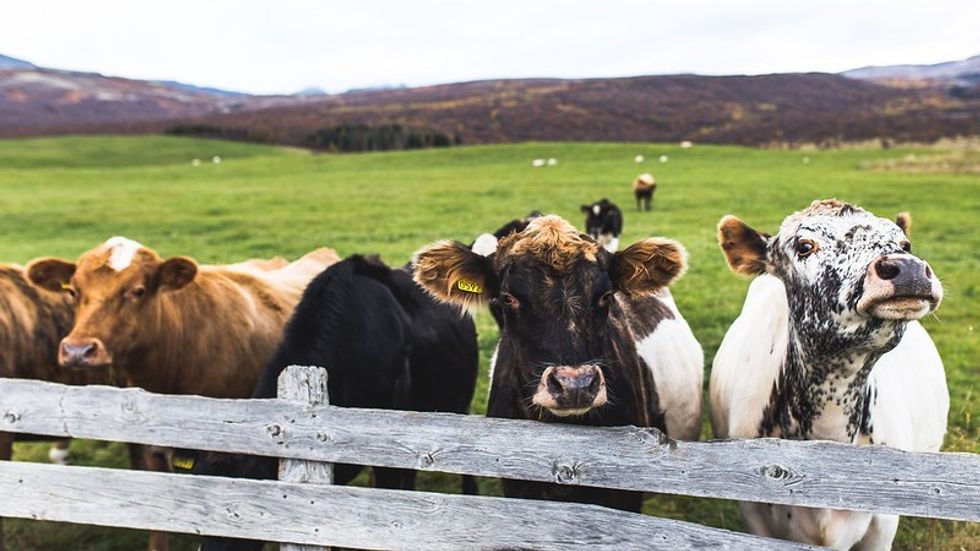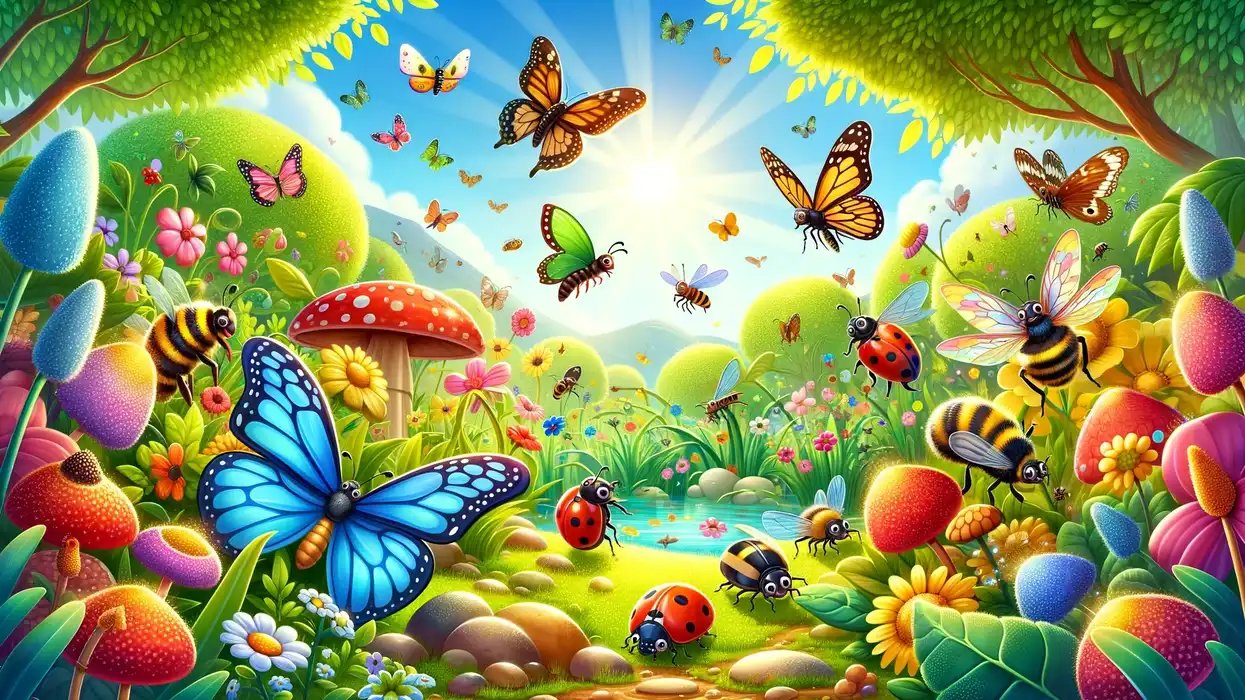Have you ever looked at cows and wondered, "Are all cows female?" The countryside has many of these interesting animals, known as gentle giants on the farm. Whether eating grass peacefully or making sounds playfully, cows come in various types, each with a unique purpose. Among them are strong beef cows, calm dairy cows, and bigger dairy bulls.
From their historical journey as descendants of wild cattle to their role in modern farming as dairy or beef producers, cows, and bulls have shaped cultures and economies. These facts will explore the life cycle that starts with baby male and female cows, the importance of adult males, and why not all cattle are built the same.
From their wild ancestors to modern farms, cows have played a big role. Dairy cows give milk, while beef cows provide meat. There are also bulls, which are adult male cattle. Cows can be different breeds, suited for dairy or beef. As you read on, you will learn more about the various types of cattle and their purposes on the farm.
Understanding Cattle: The Basics
 Shutterstock
ShutterstockCurious about the different terms associated with cattle? It's not just a matter of beef or dairy! As you learn about these farm animals, you'll discover that there's much more to their world.
- 'Cow' technically refers to an adult female cattle that has had at least one calf. This term is used for dairy cows most often, as their primary purpose is to produce milk.
- The word 'cow' isn't just for mature female cattle; it spans across various species, including moose, elephants, sea lions, and whales. Each of these creatures shares this common name when referring to their adult females.
- Male cattle are known as bulls or steers. Bulls are adult males who have not been castrated and are often used for breeding. Steers, on the other hand, are castrated males typically raised for beef.
- Young female cattle that have not yet had a calf are called heifers.
- Dairy breeds such as Holsteins or Jerseys are bred for milk production, while beef breeds like Angus or Hereford are raised for meat.
- Dairy bulls are typically the sires in dairy farming, contributing to the genetic makeup of the next generation of dairy cows.
- Draft animals include certain cattle breeds used for labor, such as plowing fields or pulling carts.
The Life Of Dairy And Beef Cattle
 Shutterstock
ShutterstockStill pondering if dairy cows or beef cattle are only female? Let's take a closer look at the distinctions between dairy and beef farming practices that highlight the roles of both male and female cattle.
- Dairy cows are usually part of dairy breeds that are specialized for high milk production. They must have a calf to produce milk, and dairy farmers manage breeding to ensure a consistent milk supply.
- Beef cattle, from both dairy and beef breeds, can be female or male. Even dairy breeds produce beef, often from bull calves or dairy steers.
- Young bulls from dairy breeds may be raised for beef if they are not kept for breeding purposes. However, dairy bulls are less common in the beef industry compared to beef breeds.
- In beef breeds, both male and female cattle are raised for meat. For example, a cow from a beef breed may raise several calves for beef production throughout her life.
The Diversity Of Cattle Breeds

Did you know that there are over 800 cattle breeds worldwide? Each breed boasts unique characteristics, suited for either dairy, beef, or even draft animals.
- Dairy breed cattle are usually leaner, with udders developed for efficient milk production. Each dairy cow can produce several gallons of milk per day, depending on their breed and diet.
- Beef breed cattle have more muscular builds, optimized for producing meat. Beef from these cattle is prized for its flavor and tenderness.
- Cattle, such as the Brahman breed, are known for their adaptability to hot climates and are often crossbred with other breeds to produce hardy offspring.
- The reproductive status of young bovine animals can significantly impact their role on the farm, whether they'll become part of the dairy herd, raised for beef, or even sold to another farm to continue their lineage.
How Cows Produce Milk
One of the most enchanting farm facts you may want to learn is how cows produce milk. It is a cycle that connects dairy cows with their young and, ultimately, with humans.
- A dairy cow needs to have at least one calf to start producing milk. After giving birth, the calf will drink its mother's milk, and the surplus is collected for human consumption.
- Dairy cows belong to the same breed as their bull calves, but not every calf will join the milking herd. Male calves are often raised for beef, even if they are from dairy breeds.
- The milk production cycle is an essential aspect of dairy farming, as it ensures the health and productivity of dairy cows and provides dairy products.
- An important factor in cows' milk output is hormones, especially prolactin, which makes them make more milk, and oxytocin, which makes milk come out when they are milked. These hormones are very important for starting and keeping up the breastfeeding cycle.
- Most dairy cows are milked twice or three times a day to keep them healthy and make sure they produce enough milk. Regular milking encourages the cow to make more milk and keeps problems like engorgement and mastitis, an itchy disease of the mammary gland, from happening.
- Most dairy cows are milked two to three times per day to maintain optimal milk production and cow health. The regular milking helps to stimulate further milk production and prevents issues like engorgement and mastitis, a painful inflammation of the mammary gland.
- A dairy cow usually gives birth to a calf every 305 days. After that, she goes through a dry period of about two months before giving birth again. This time off is very important for the cow's health because it gives her a chance to heal and get ready for the next round of pregnancy and nursing.
Cattle Through The Ages
 Shutterstock
ShutterstockCattle have been domesticated for thousands of years, and modern domestic cattle are quite different from their wild ancestors. Delve into history and see how cattle have evolved to become the farm animals we know today.
- The lineage of modern domestic cattle traces back to the now-extinct wild aurochs, which were domesticated over 8,000 years ago.
- Through selective breeding, various cattle breeds have been developed to enhance specific traits, such as milk production in dairy breeds or meat quality in beef breeds.
- The domestication process has created breeds suitable for different climates and purposes, from dairy farming in temperate regions to beef production in grassland areas.
- Cattle domestication had a huge effect on human history because it made the change from nomadic to settled farming societies easier. Because people were not always looking for food, this change made it possible for more complex social structures, economies, and advances in science and the arts.
- In addition to their usefulness as farm animals, cattle have also been very important to many cultures and religions throughout history. For example, in ancient Egypt, cattle were linked to many gods and were seen as signs of fertility and power.
FAQs
What is the difference between dairy cows and beef cows?
Dairy cows belong to breeds specialized for high milk production, such as Holsteins or Jerseys. They must have a calf to produce milk. Beef cattle, which can be male or female, come from both dairy and beef breeds (like Angus or Hereford) and are raised for meat production.
How do dairy farmers ensure a consistent milk supply?
Dairy farmers manage breeding carefully to ensure a consistent milk supply. Dairy cows must have a calf to begin producing milk, and the timing of breeding is crucial to maintain continuous milk production. After a cow gives birth, she enters a lactation period where she produces milk, followed by a dry period before the next calving.
What happens to male calves in dairy farming?
In dairy farming, male calves are typically raised differently from females. While female calves may join the milking herd, male calves are often raised for beef, even if they are from dairy breeds. This practice allows farmers to utilize all animals born into the dairy system efficiently.
How has cattle domestication impacted human societies?
The domestication of cattle has significantly impacted human societies by facilitating the transition from nomadic to settled agricultural communities. Cattle farming provided a stable food source and labor force, which were crucial for the growth of civilizations.
What are the roles of different cattle breeds in draft work?
There are types of cattle that are only used as draft animals. This means that they are used to do hard work like plow fields or pull carts. Because they are strong and durable, breeds like the Belgian Draft and Holstein are good choices for these jobs. These cattle are very useful for farming, especially in places where machines are hard to find or not available at all.
So, are all cows female? Well not exactly! While the term 'cow' is often used colloquially to refer to all cattle, in fact, cattle are a wide range of species that serve different purposes. When it comes to farming, male and female dairy and beef cattle each have their own jobs to do.
Each cow makes a unique contribution to agriculture, whether it is by giving us milk, or meat, or even working as a draft animal. You will be ready to answer the question, "Are all cows female?" the next time someone asks you!
Related Articles Around the Web




 Shutterstock
Shutterstock Shutterstock
Shutterstock
 Shutterstock
Shutterstock




